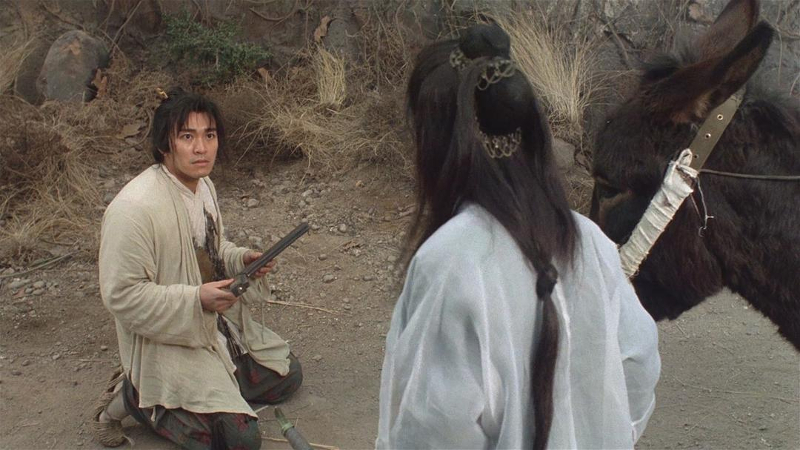A Chinese Odyssey: Part One – Pandora’s Box (Sai Yau Gei: Yut Gwong Bou Haap, 西遊記第壹佰零壹回之月光寶盒)
A Chinese Odyssey: Part Two – Cinderella (Sai Yau Gei: Sin Leui Kei Yun, 西遊記大結局之仙履奇緣)
Director – Jeffrey Lau – 1995 – Hong Kong – 87 + 98m
***
The Monkey King is banished to earth with loss of memory for a series of encounters with monsters and romantic interludes – screened as part of Focus Hong Kong 2022 Chinese New Year on Saturday January 29th
These two films are the first and second parts of the same story, so it makes sense to screen them together as a double bill. The starting point is the 16th century Chinese novel Journey To The West, which has also spawned such productions as the seminal Chinese animation The Monkey King (Wan Laiming, Cheng Tang; Part One, 1961; Part Two, 1964) and the long-running Japanese TV series Monkey (1978-80). The novel’s plot concerns a monk and his three assistants Pigsy, Sandy and Monkey who journey to the West (i.e. Central Asia and India) to obtain Buddhist texts.
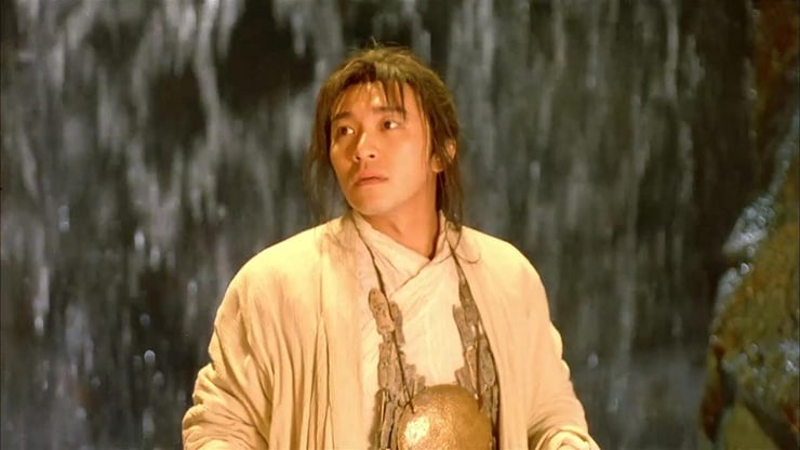
Less an adaptation of the novel than a tangential story that uses the novel’s framework as its starting point, the films are bookended by two sequences, one at the start of Part One, the other at the end of Part Two, which start the tangential story rolling and wrap it up respectively.
At the start of Part One, the Monkey King (Stephen Chow) gets embroiled in a fight in Heaven with Guanyin (the Buddhist goddess of compassion) and is punished. Pleading by his master (Law Kar-ying), referred to in the English subtitles as the Longevity Monk, gets Monkey’s sentence reduced to loss of memory and banishment to Earth, where he is given the identity of Joker, the leader of a gang of bandits in which his number two (Ng Man-tat) looks suspiciously like Pigsy.
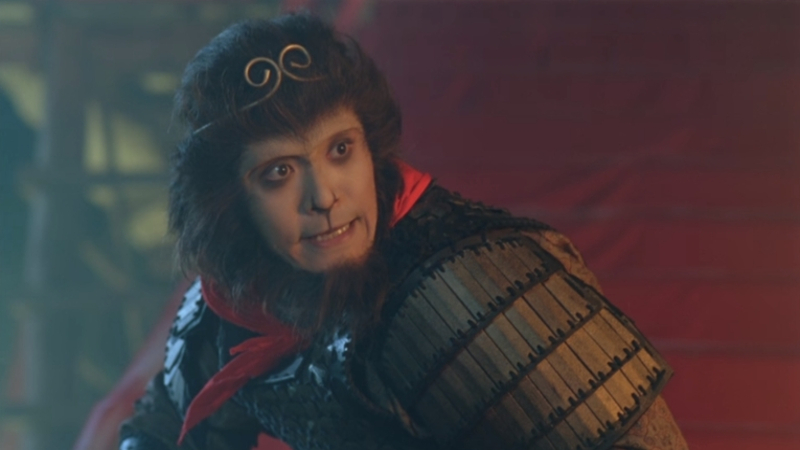
At the end of Part Two, Joker has had another encounter with Guanyin who has restored his identity, so he once again knows himself to be Monkey. We are suddenly in a city where Monkey sees Joker (no longer Monkey himself) and Joker’s love interest Zixia (Athena Chu) standing apart from one another atop a city gate. Monkey briefly possesses Joker’s body to kiss Zixia and ignite their romance, then releases him and leaves the two lovers to their future happiness. Departing the city, Monkey rejoins the Monk, Pigsy and Sandy as they set out on their journey in search of the Buddhist texts.
In between these bookends, Part One ends in the middle of the story proper, which is continued in Part Two.
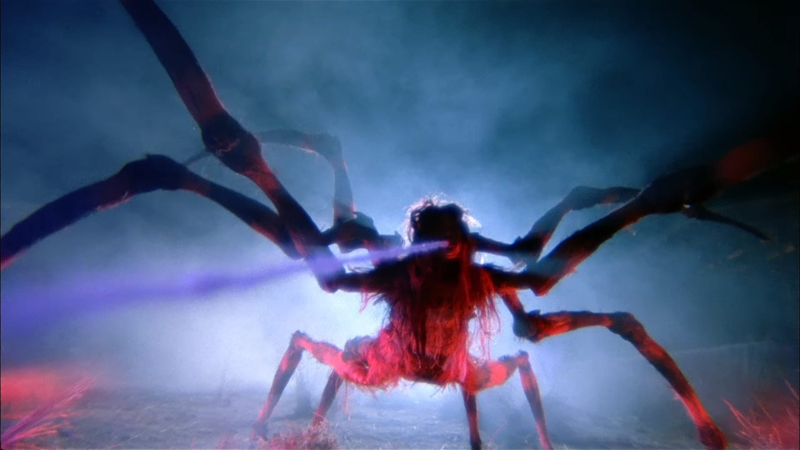
As the story gets going in Part One, the bandits are attacked by two demon sisters, Spider Woman (Lam Kit Ying) and Bak Jing-jing (Karen Mok). Also in the mix is the fearsome Bull King (Lu Shuming).
Joker falls in love with Jing-jing, but she misreads him and commits suicide. This gives the script the excuse for some nonsensical time travelling, as it throws in Pandora’s Box (as it’s named in the English subtitles – perhaps it’s called something far less Western in the original Cantonese) to enable Joker to travel back in time and save her. Alas, he fails on several attempts (a sequence that feels like lazy scriptwriting every time it repeats) before eventually falling into the clutches of a further supernatural, female being Zixia (later to appear in Part Two‘s closing bookend sequence) who takes Pandora’s Box from him and marks his foot with three dots as a sign of ownership.
Part Two arguably emphasises the romantic element even more, with Joker still in love with the absent Jing-jing while Zixia falls for him. The Bull King, who has been telegraphed as a major character in Part One, comes into more significant play when he kidnaps Zixia to be his concubine, forcing Joker to rescue her from the wedding ceremony. When Jing-jing turns up again later, she must deal with the fact that Joker now loves someone else.
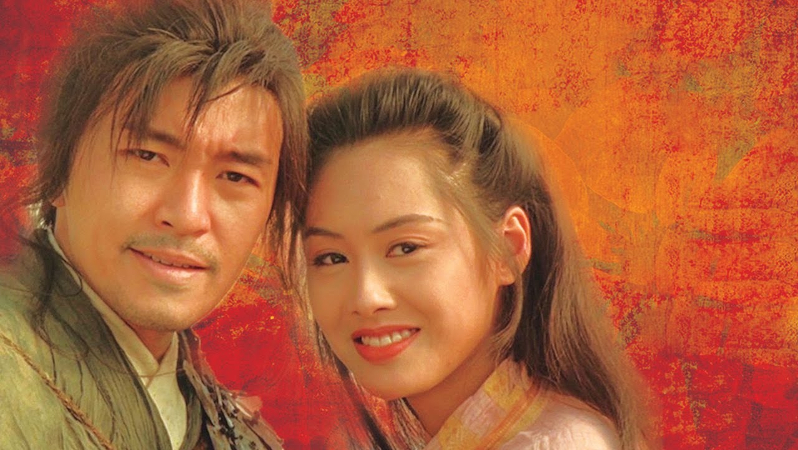
For non-Cantonese speaking Westerners, the extremely convoluted plot of the main body of the two films is pretty hard to follow, partly because they assume a familiarity with both the novel and the mythology underpinning it that most Western viewers simply won’t possess and partly because verbal plot developments come at you impossibly fast in the English subtitles.
All of these issues ought to make the two films a near-unwatchable experience for many Westerners. Yet Jeffrey Lau moves the proceedings along at such a frenetic pace that you’re never bored, while Stephen Chow’s manic performance keeps you glued to the screen. The incredible, eye-popping stunts (think: lots of actors flying using wire-work or somersaulting through the air in the manner of so many Hong Kong movies of this period, before such things entered mainstream Hollywood via The Matrix, The Wachowskis, 1999) assault the senses as rapidly as the confusing verbals, compensating massively for the overall incomprehensibility.
It would be fair to describe the two films as all-action, visually spectacular, supernatural, madcap comedies. No other nation on Earth does this stuff quite the way the Hong Kong Chinese do, and the two films are consequently well worth watching – or rewatching – should you get the chance.
A Chinese Odyssey: Parts One & Two played in the UK as part of Focus Hong Kong 2022 Chinese New Year on Saturday, January 29th.
Trailer:
Part One:
Part Two:
